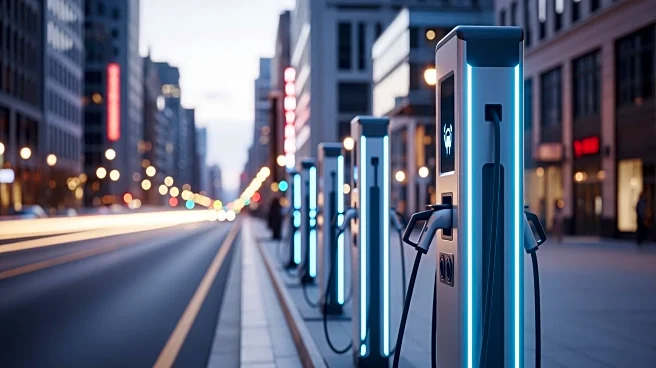What's Happening?
Pacific Gas and Electric Company (PG&E), along with partners Nissan, Fermata Energy, and the Schatz Energy Research Center, have successfully demonstrated vehicle-to-grid technology at the Redwood Coast
Airport Microgrid in McKinleyville, California. The project integrates two Nissan Leaf vehicles with four bidirectional charging stations, utilizing Fermata Energy's vehicle-to-everything platform. This system provides automated frequency response capabilities for grid support and energy resilience. The vehicles participate in California's Emergency Load Reduction Programme, generating revenue during grid stress events by responding to changes in grid frequency.
Why It's Important?
The demonstration of vehicle-to-grid technology represents a significant advancement in energy management and sustainability. By enabling electric vehicles to discharge energy back into the grid, this technology can enhance grid stability and reduce energy costs. It also supports the integration of renewable energy sources, contributing to California's clean energy goals. The collaboration between PG&E and its partners showcases the potential for innovative solutions to address energy challenges and improve resilience in critical infrastructure.
What's Next?
The success of this demonstration may lead to broader adoption of vehicle-to-grid technology across California and beyond. PG&E and its partners could expand the use of bidirectional charging stations to other microgrid sites, enhancing energy management capabilities. Additionally, the technology's role in emergency load reduction programs could be further developed, providing financial incentives for electric vehicle owners and supporting grid reliability during peak demand periods.













